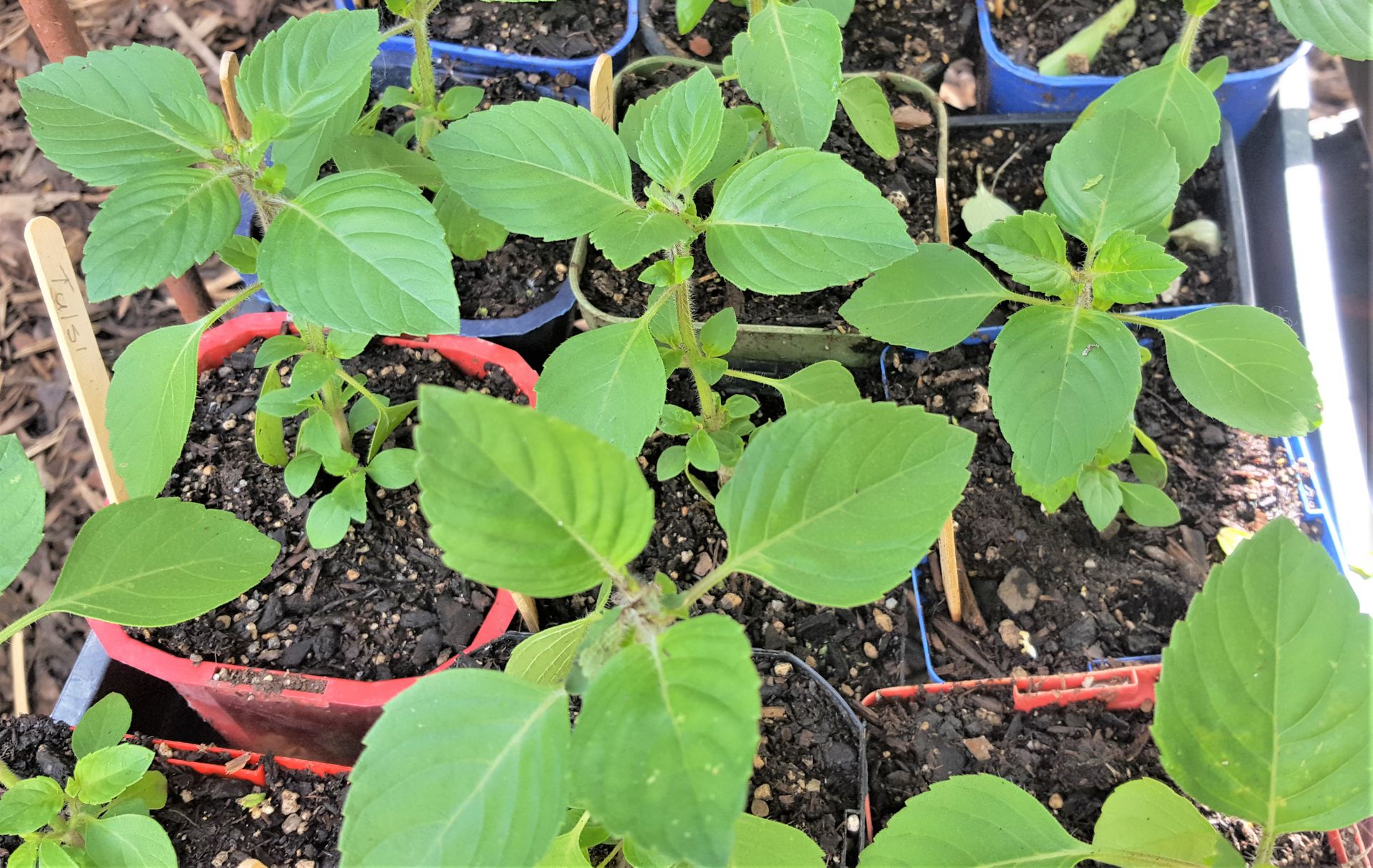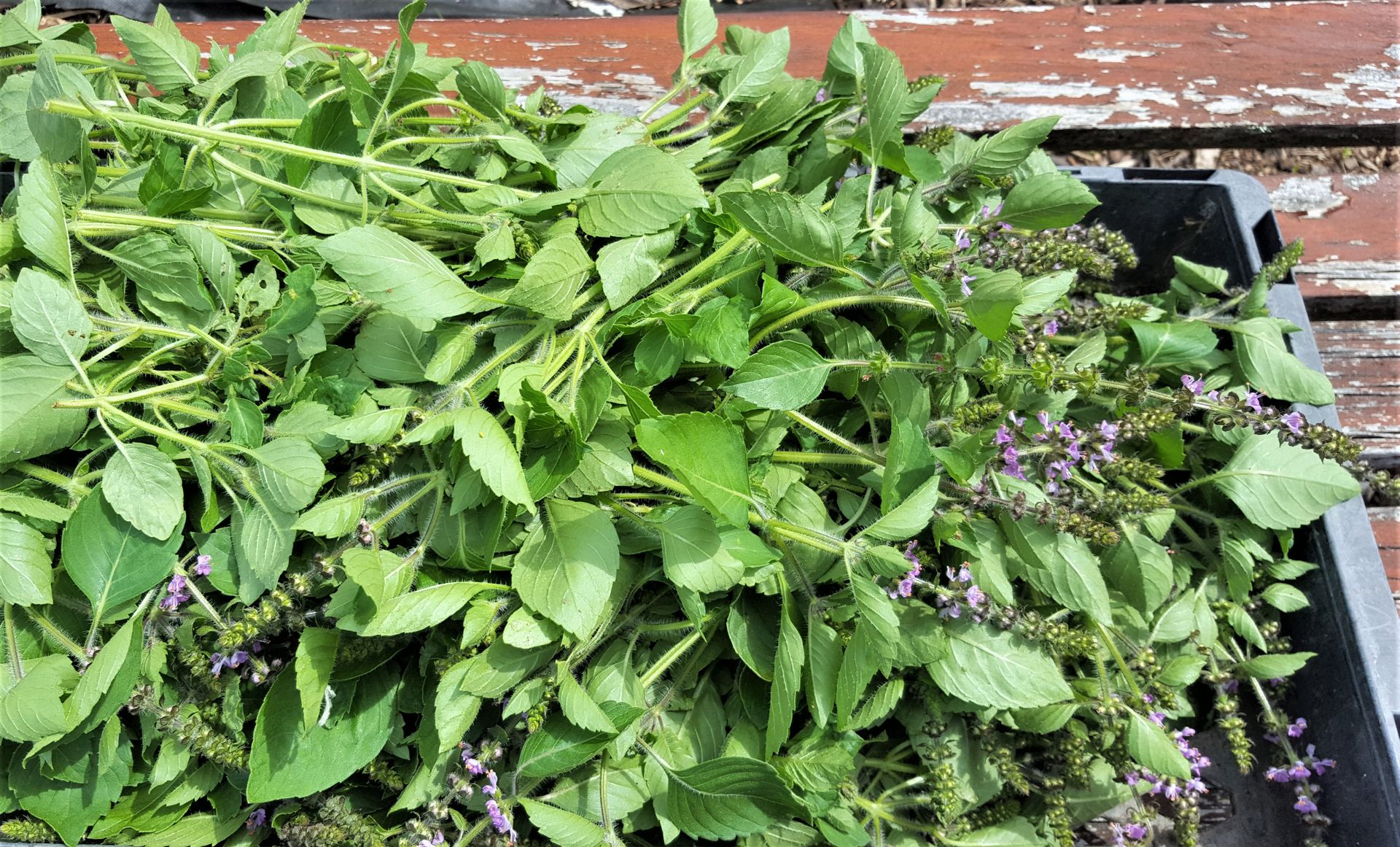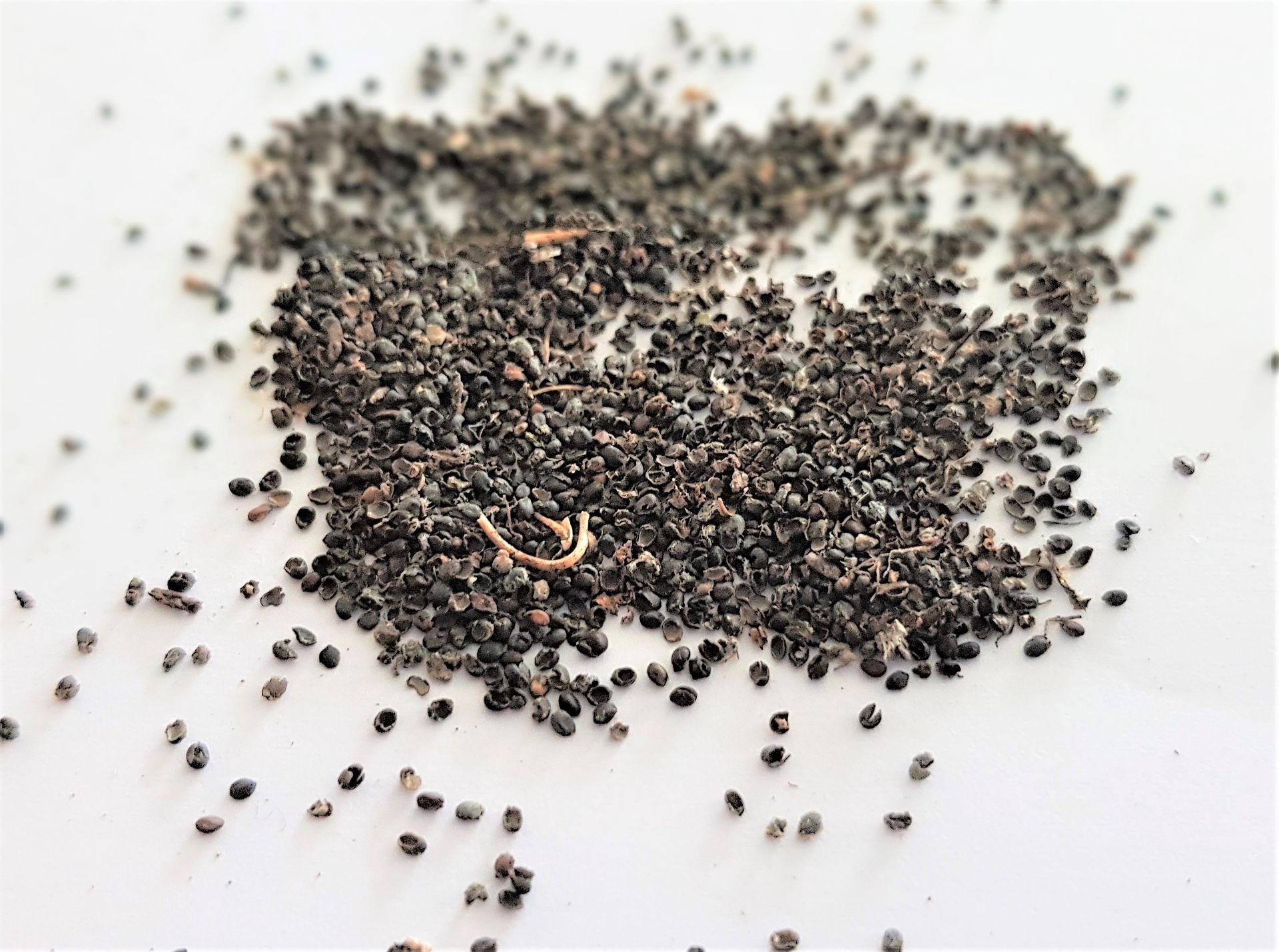Growing Tulsi
October 2020
I have been growing tulsi for a number of years now and I just thought I would share some thoughts and growing tips. Tulsi is starting to become more popular in NZ – maybe in some small part due to me making all my workshop participants drink some of my Tulsi Spice tea.
Over the years, I have grown several different varieties of Tulsi – amrita, Krishna, vana and temperate (sometimes called Kapoor). My out and out favourite would have to be temperate, especially for our growing conditions in Christchurch. For the other varieties, I struggled with long and poor germination rates, and then with slow growth even in my tunnel house. Temperate tulsi is such a star performer – germinates easily and fast with high germination rates, then grows quickly and copes so well with regular harvesting. Plus, the flavour is amazing – all the clovey, spicey, sweet goodness that you expect from tulsi.

I start my tulsi in August, germinating the seeds on a heat pad inside because I want to get it planted in the tunnel house in October. However, from November onwards, Tulsi is very easy to germinate and get growing outside. Last year, I grew some tulsi outside as well as in my tunnel house and it grew OK outside, but a lot slower than in the tunnel house (of course). Tulsi is related to basil, so really likes the same growing conditions although probably easier to grow than basil. If you are growing it outside, then try to plant in a sunny, sheltered place and keep well-watered.

You can pick fresh leaves to make tea as often as you want – tulsi is like basil in that you need to prevent it from flowering to keep producing leaves. I harvest my tulsi for drying just as it begins to flower and I cut it right down to the base – brutal, but the plant actually comes back so much stronger, especially after the first harvest. In a good year, I would expect to get at least 4 harvests off one plant.
Tulsi is very slow to dry – much slower than you would expect given the size of the leaves and flowers and generally takes 10 days to 2 weeks to dry in my drying shed. The good news is that although tulsi is slow drying, it does not spoil easily. Other plants such as mint and lemon balm dry much faster but are much more particular about their drying conditions – too hot and the leaves turn brown. Drying tulsi is absolutely worthwhile as dried tulsi retains its flavour and vitality.
I originally bought my seed from a very knowledgeable herb seed grower in America – Strictly Medicinal Seeds – the seed packets all got opened by our border control and passed inspection which I was very happy about. You do need to be extremely cautious about buying seeds from overseas sources. I have been saving my tulsi seed for a couple of years now and thankfully do not need to source the seed from America anymore.

A note of caution about buying tulsi seeds in NZ. There are many different varieties of tulsi and currently some of the tulsi seed being sold here does not produce flavoursome tulsi. I love Kings Seeds and buy all my seeds off them every year, but a few years ago I did buy some tulsi seeds off them and was so disappointed with the plants. I did contact them about this, so maybe they have changed their supplier, although last year my neighbour told me how her tulsi did not taste good. Be aware also, that many other sellers of tulsi seeds and plants also get their seeds from Kings Seeds.